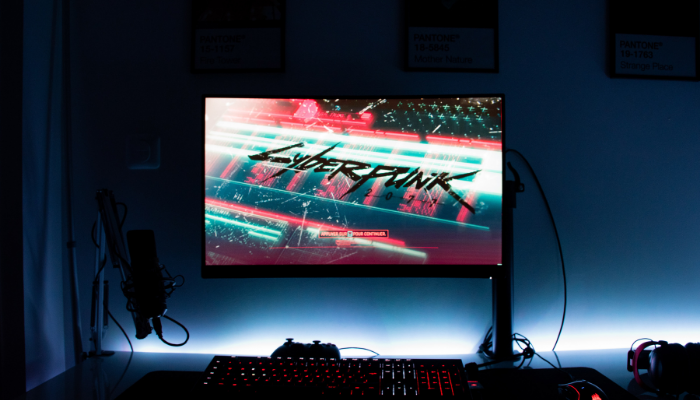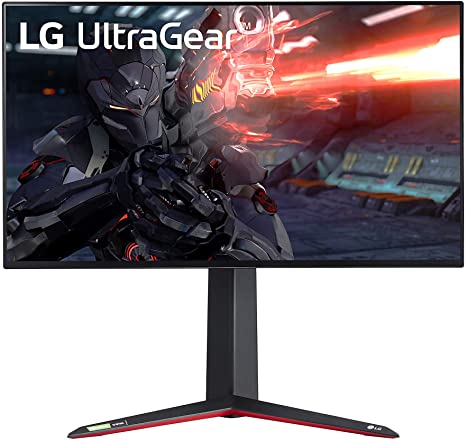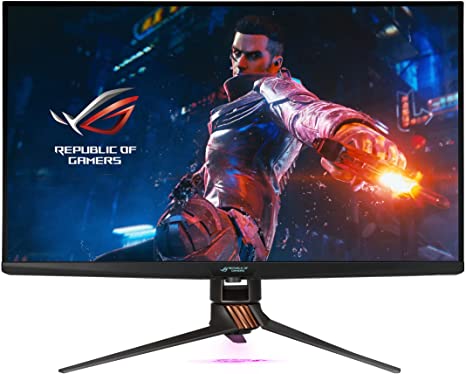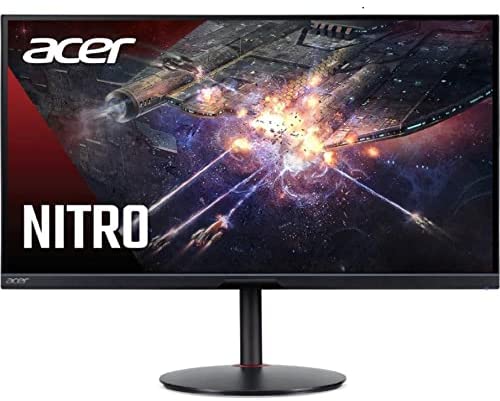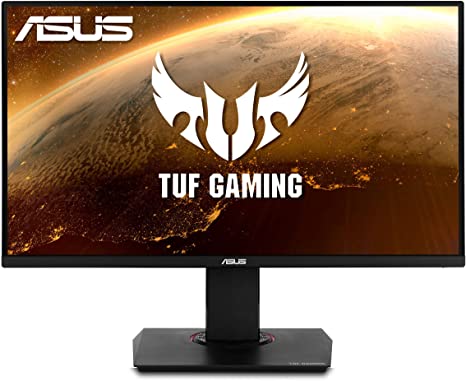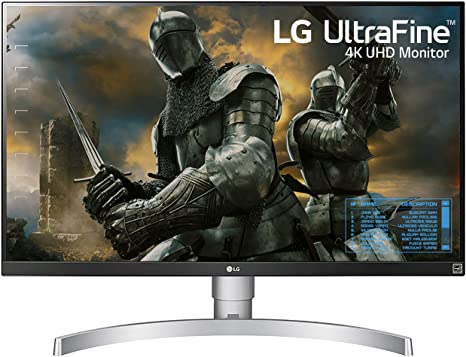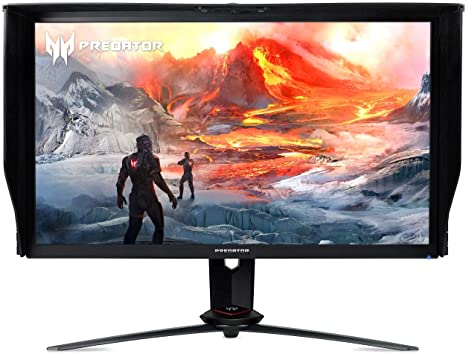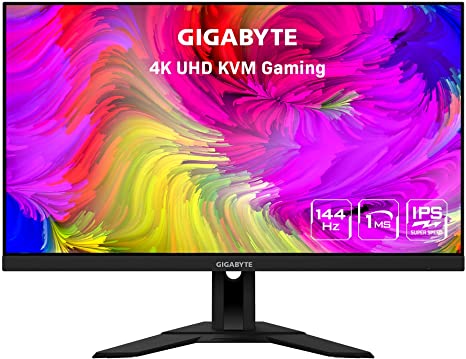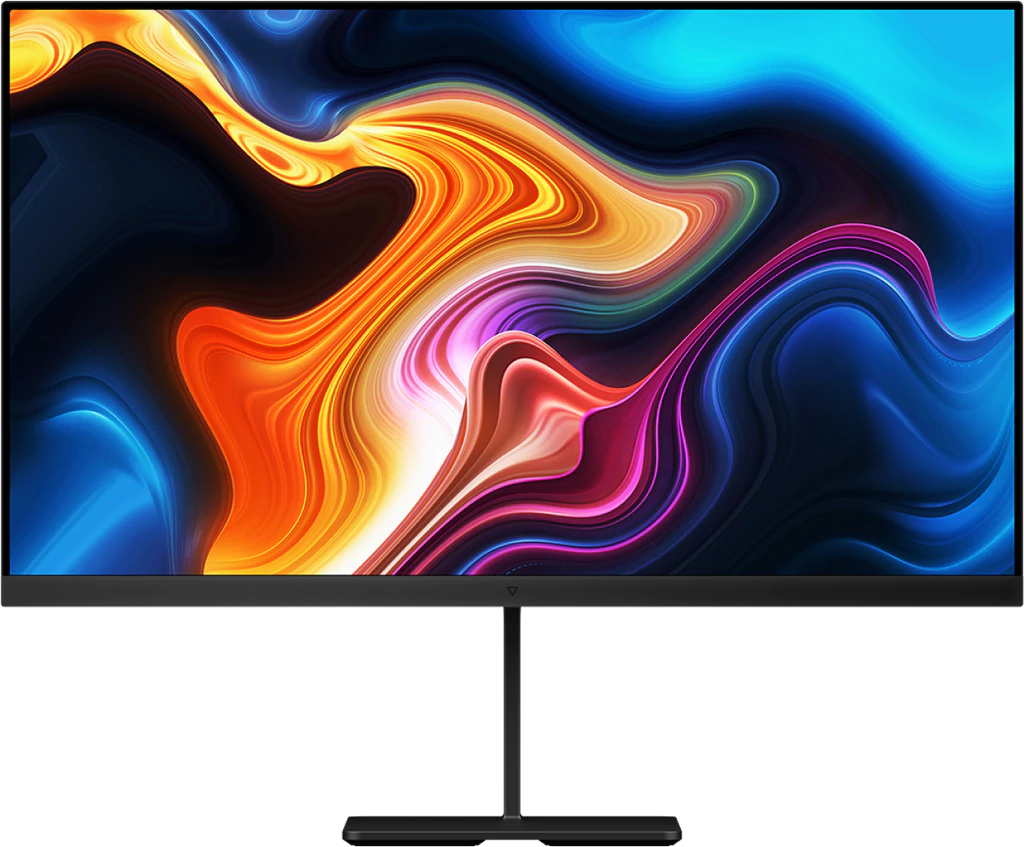Hello there,
we’re back with some fresh features to find the most suitable monitors. The best 4K gaming monitor has become more sought after than it has ever been, due to the implementation of current high GPUs from AMD and Nvidia,
as well as a plethora of 4K-capable gaming systems. With both the power to push 4K native agreements at frame rates, numerous gamers are searching the internet for the greatest 4K gaming monitors this same area has to offer.
What is a 4k Gaming Monitor?
Competitive players generally prefer displays with faster refresh rates, giving one of the best 240Hz monitors a more appealing choice. A 4K display, on the other hand, can be just what you need if visual quality and immersion are your main priorities. Remember that the extra pixels on a 4K panel would put a lot more burden on your system.
Things To Expect When Purchasing The Best 4K Gaming Monitor
Purchasing a 4K monitor for someone’s gaming needs, like any other piece of hardware, comes with a set of anticipations. The following are by far the most reasonable goals that emerge with the acquisition of a high-resolution monitor:
Refresh Rates
Among the most efficient and accurate to take a gander at in a monitor is its refresh rate. A fast response time can make all the difference between such a pleasurable gameplay experience and is something far less pleasurable. Displays in today’s money can range from 60Hz to 360Hz, with higher becoming stronger for gameplay smoothness.
However, 4K monitors lag behind in the terms of frame interpolation, only achieving peak levels of around 144Hz. While this is acceptable throughout most cases, marketable gamers seeking an advantage over other competitors will be disappointed.
Lower Framerates
This nicely led directly to frame rates. Even though previously stated, a 4K monitor has a large number of pixels because once compared to flat reliability 1080p and 1440p different versions. While this is awesome for image quality, it’s just not that great for such demands made on one’s PC.
Many people would recognize the achievement drop because once switching from 1080p to 1440p – that’s an undisputable decrease in FPS output that really is visible to all. The regular, though not greater, the drop can indeed be expected because once switching from 1440p to 4K.
When playing games at full resolution, your PC is under so much strain, as the graphics card is working much harder.
Finally, we should indeed think of the cost. Regrettably, elevated functionality is one of the least expensive features a monitor can have – just not in a pleasant way. In the current economy, the average price of a 4K monitor is substantially higher than that of any 1080p/1440p potential substitute.
So, unless you’re looking for a 4K monitor, don’t expect to just get a good one of those for cheap – they typically start around $300 and get more highly-priced with each elevated feature those who offer.
9 Best 4K Monitor For Gaming
We’ll do most of the investigations for you even if selecting the perfect 4K gaming monitor in 2022 is a difficult task.
We’ll only discover the perfect monitors available, taking into consideration price, effectiveness, aesthetic appeal, and characteristics. We’ll furthermore rank every monitor separately, wanted to let you know which one offers the best bang for the buck in its classification.
So, and so much to cover, let’s just get right to and dive into the best 4K gaming monitors of 2022!
01) LG 27GN950-B 27 Inch
For the excellent purpose, the LG 27GN950-B is our best 4K gaming monitor pick. This not only has potential for application 4K resolution image resolution but instead screen estate development, but that also provides extraordinary reaction and refresh rates.
Having a look at the design, the 27GN950-B bears some resemblance to the other monitors in the LG Ultragear starting rotation, with such a sleek design that is nicely balanced with a pointed, angular stand.
With the exception of a rotating halo completed in red and silver, the back of the monitor will not really have much in the way of design aspects. The display on its own is a little underwhelming in terms of ergonomics, offering hardly any tilt, altitude, or gyroscopic improvements.
The stand does have a USB charging station which is compatible with a rapid switch for rapid hold having to switch.
PROS:
- Excellent picture quality
- FreeSync support and G-Sync compatibility
- Exceptional response time
- Wide viewing angles
CONS:
- Poor contrast ratio
- Doesn’t handle reflections well
02) ASUS ROG SWIFT PG32UQX
The ASUS PG32UQX – the world’s first Mini LED gaming monitor – is the best 4K gaming monitor runner-up. Whether this collection was solely based on ability,
the PG32UQX would almost certainly be at the top, thanks to its 4K screen resolution, 144Hz refresh rate, minimal turnaround time, and VESA DisplayHDR1400 credentialing. Nevertheless, the asking price makes it difficult to highly suggest to the general public – especially since it normally sells for just under $3,000.
The PG32UQX, like all premium ASUS monitors, has a stylish design that leans more towards ‘gamey’ than boring. The triad booth is attractively designed and provides good rebalancing with little change in frequency.
The monitor’s front is fairly devoid of life, but it does include a cool Retina display that can also be customized via the monitor’s OSD.
The back of the monitor features a new(ish) aesthetic of ROG marketing, with the sizable ROG RGB logo as the focal point. This monitor has HDMI 2.0, DisplayPort 1.4 (DSC), and a USB HUB as inputs.
PROS:
- World’s First Mini LED Monitor
- 144Hz Refresh Rate
- IPS technology
- DisplayHDR 1400 compatible
- FALD with 1152 dimming zones
CONS:
4ms response time
Very expensive
03) Acer Nitro XV282K
Multiplatform gamers looking for such a 4K 144Hz monitor which thus continues to support HDMI 2.1, look come to the right place – Acer also has some of the best 4K gaming monitors we’ve checked.
To begin with, Acer has managed to keep things simple with this monitor, trying to give it a fairly basic design that is neither ‘gamey’ nor boring. While it lacks the high price styling (or feel) of the Predator series,
this still provides a decent visual style that would be used in a variety of settings, which include offices. The back of the monitor does not have much in the way of design details, apart from a cylinder stand.
PROS:
- 4K gaming at 144Hz
- Great color accuracy
- VRR support for next-gen consoles
- IPS panel with 1ms response time
- Decent Value for money
CONS:
- 4ms response time
- Very expensive
04) ASUS TUF Gaming VG289Q
The ASUS TUF VG289Q is our money 4K gaming monitor, a monitor which is hit or forget in terms of gameplay but also entertainment.
Obviously, the main advantage of this monitor is its low price – but with good colors and good photo quality straight out of the box, this also provides good importance.
The VG289Q, like all TUF Gaming monitors, has a very subtle configuration that could have been considered uninteresting – particularly in comparison to everyone in this guide. Having said that, considering the price,
it always feels incredibly well crafted and provides decent adaptability for the most part. The stand has height, tilt, tilt, and swivel adjustment capabilities that have allowed users to discover the ideal viewing position.
PROS:
- Excellent price point
- The stand offers good versatility
- Good single-player 60Hz gameplay
CONS:
- Power input lag
- Low refresh rate
05) LG 27UK650 W
The LG 27UK650-W is our final suggestion in this guide, then it is our value pick. Despite the fact that this monitor does not really live up to everyone else in terms of reliability, it does have a plethora of advantages toward its name, and with a very low price tag.
Looking to start with both the design, this has to be one of the monitor’s most notable features. The stand has a beveled base with a silver brushed finish, which is a refreshing break from the more prevalent ‘V-shaped east stand we’re used to.
The silver finish complements the monitor’s black frame to create a stunning appearance that might match most room ecologies. The back of something like the monitor would be almost entirely white, providing little in the way of gaming visual appeal.
Finally, you’d really have to say that somehow this monitor is far more suited to office use instead of gaming – which isn’t entirely a bad thing.
PROS:
- Supports AMD FreeSync technology
- Great color reproduction
- Fantastic IPS panel with HDR support
- Well priced
CONS:
- Only 60Hz refresh rate
- No USB port
6) Acer Predator XB273K
The XB273K is a distant cousin of Acer Predator X27, which was previously there at top of a list. It takes everything it X27 does and trades very little for a much cheaper airframe.
Now it is predominantly encountered around the $1,000 mark, making it instantly more appealing than just the Acer X27, so the only significant distinction will be in the HDR; the XB273K has slightly lower HDR quality. But that’s pretty much it. And, given the still-dreadful country of HDR gaming on PC, that wasn’t a huge loss.
I fired up some games to put the data protection shields (which reduce computer monitor glare and reflection) to the test. The marvelous Action-Adventure video game Odyssey is exactly that.
The entire game is extraordinarily vivid and it has the sharpest image character traits to boot; there are no blurred as well as discolored edges to be seen, but each functionality appears almost beautifully defined but instead graphically recognized.
PROS:
- Brilliantly detailed pictures
- Offers fast refresh and response times
CONS:
- The contrast could be better
7) Gigabyte M28U
For several years, 4K has already been incredibly expensive in PC gaming. That simply comes down to one simple fact: there are a lot of pixels traveling around at once. To experience 4K at its strongest,
you’ll have to have a graphics card proficient in the task and just a gaming monitor capable of capturing the final result. But neither has been cheap for a lot longer.
That’s beginning to change, as the Gigabyte M28U demonstrates with its excellent value and 4K feature set. Not only was it a fantastic monitor for PC gamers, but it also supports HDMI 2.1, making it a good choice for Xbox Series X and PlayStation 5 owners.
The Gigabyte M28U has a 28-inch IPS panel hidden behind four slim bezels. The IPS panel technology provides exceptional color depth and clarity while also performing well for most other areas, particularly trying to view angles.
Especially noticeable on-screen during testing were the black and white levels, whereby the smallest way dip in way of comparison was discernible. That technology has paved the way in black levels is also quite outstanding for an IPS,
particularly somebody lacking a truly good contrast spec like this. The M28U has a 1,000:1 contrast ratio and a hint of such an explained IPS glow from around the edges of shadowy images, but neither is especially noticeable while gaming.
PROS:
- Affordable 4K
- 144Hz refresh rate
CONS:
- Cheap stand
- Overdrive often overdoes it
8) Eve Spectrum ES07D03
Eve has knocked it out of the park with the Spectrum ES07D03 after a bumpy start with its ill-fated journey into the realm of tablets.
It’s a great gaming monitor with a lovely LG display and all the bells and whistles you’d expect from a contemporary screen. That’s the outcome of Spectrum’s crowd-sourced production process, and it seems to have paid well.
Except for those who want good HDR. I was looking for a bit more pizazz in my HDR scenes with a peak brightness of 750cd/m2 and just a little local fading in its backlighting array.
Unfortunately, PC gaming and monitors continue to suffer. Everything the Eve Spectrum does, however, has astounded me. I’m a very little bit in love with the LG Nano IPS display, which has brilliant colors and smooth action.
The LG nano-IPS Oxide display is at the core of the Spectrum and is responsible for the monitor’s outstanding visual performance. Only a few panel manufacturers exist on the earth, and LG is definitely one of them.
This newest nano-IPS display is indeed an 8-bit + A-FRC display suitable for 4K resolutions at 144Hz. It has a color gamut of 98% DCI-P3 and 100% of the sRGB color space, making it perfect for professionals.
PROS:
- Excellent design
- Fantastic LG IPS panel
CONS:
- Poor HDR and local dimming
- High sticker price
9) Philips Momentum 558M1RY

The sheer size and splendor of Philips’ 55-inch measure powerhouse have me completely enthralled. Aside from Nvidia’s failed BFGDs, no other PC monitor can compete with this beast.
However, notwithstanding its amazing size and speed, there are also some weaknesses that, while not deal-breakers, must be taken into account.
But before that, this same good news. This 4K VA panel has a DisplayHDR 1000 certification and also can render the latter’s native resolution of 3840×2160 at speeds in excess of 120Hz.
Unfortunately for hardcore gamers, its HDMI variant is only 2.0, so your next-generation game boxes will indeed be limited to 4K/60. Nevertheless, the Series X might very well support 120Hz at 1440p, whereas the PS5 does not.
For us PC users, this isn’t an issue because the Philips display wants to support DisplayPort 1.4, allowing us to have the full 4K resolution at a snappy 120Hz.
This, combined the with screen’s bright, vibrant panel, makes it ideal for smooth 4K gaming. And now I’m infatuated by Philips’ Ambilight innovation, which also surrounds the back of the showcase with RGB LEDs that can change hues independently to complement the panel’s commensurate color.
PROS:
- TV scale but with DisplayPort
- Bright and colorful
CONS:
- Some inverse ghosting
Conclusion
So, there you have it, our comprehensive guide on the Best 4K Monitors For Gaming. The technology around 4K monitors is only going to get better, so investing in a 4K gaming monitor is a future-proof idea. The only thing left to do is, decide whether or not a high-end 4K display is right for your specific needs.
FAQs For 4k Gaming Monitor
Is a 4K monitor worth it for gaming?
4K monitors are worth it for professional and everyday uses, especially since they’ve just become more affordable. We don’t suggest them for PC gaming since the 4K UHD resolution is quite demanding, and the visual quality boost over a great 1440p monitor is usually worth the performance impact.
Is 144Hz 4K good for gaming?
4K @ 144Hz gaming monitors are the holy grail of gaming, blending high pixel resolutions with a fast refresh rate to provide a seamless and realistic gaming experience. However, graphics cards should be able to provide larger bandwidth due to the high refresh rate and resolution.
Are there 4K 120fps monitors?
ASUS ROG Strix XG438Q 43″ Large Gaming Monitor with 4K 120Hz FreeSync 2 HDR 600 90% DCI-P3 Aura Sync 10W Speaker Non-glare Vision Care HDMI 2.0 DP 1.4 Remote
Is 2k or 4K better for gaming?
Gaming. 4k monitors have more pixels than 2k monitors due to their greater resolution, and additional pixels provide dazzling displays due to the higher quantity of material they can output on the screen, resulting in sharper objects.
Do 144Hz 4K monitors exist?
The LG UltraGear is the first 4K Nano IPS 1ms gaming monitor capable of showing your next-generation GPU to its full potential. The 144Hz refresh rate and 1ms response time on this 4K 27-inch HDR display are outstanding for a 4K monitor.
Thank you for sticking with me until the top of this journey. Stay Tuned at Gimmickyard For more Stuff We upload for Clearing your Doubts.
